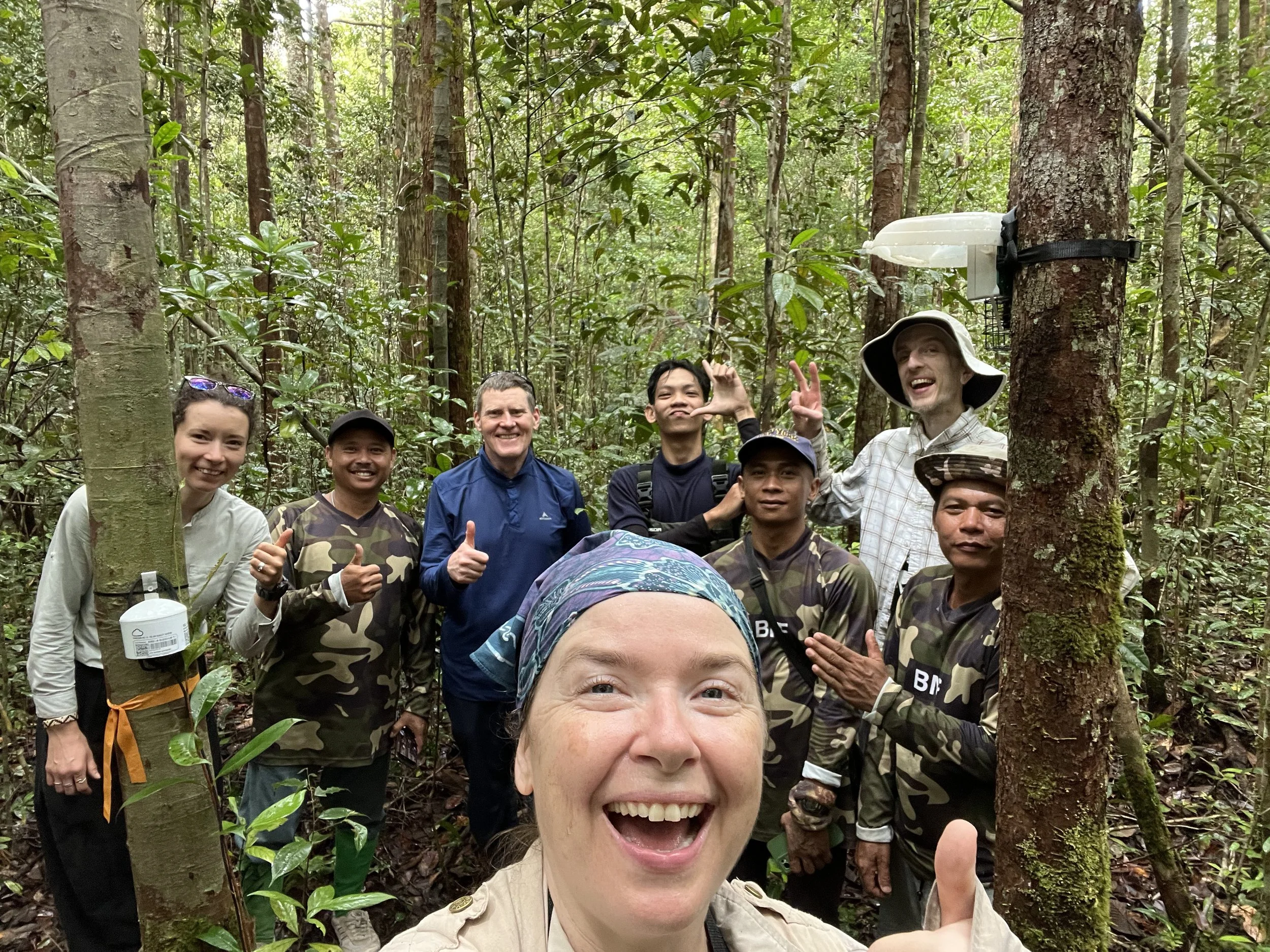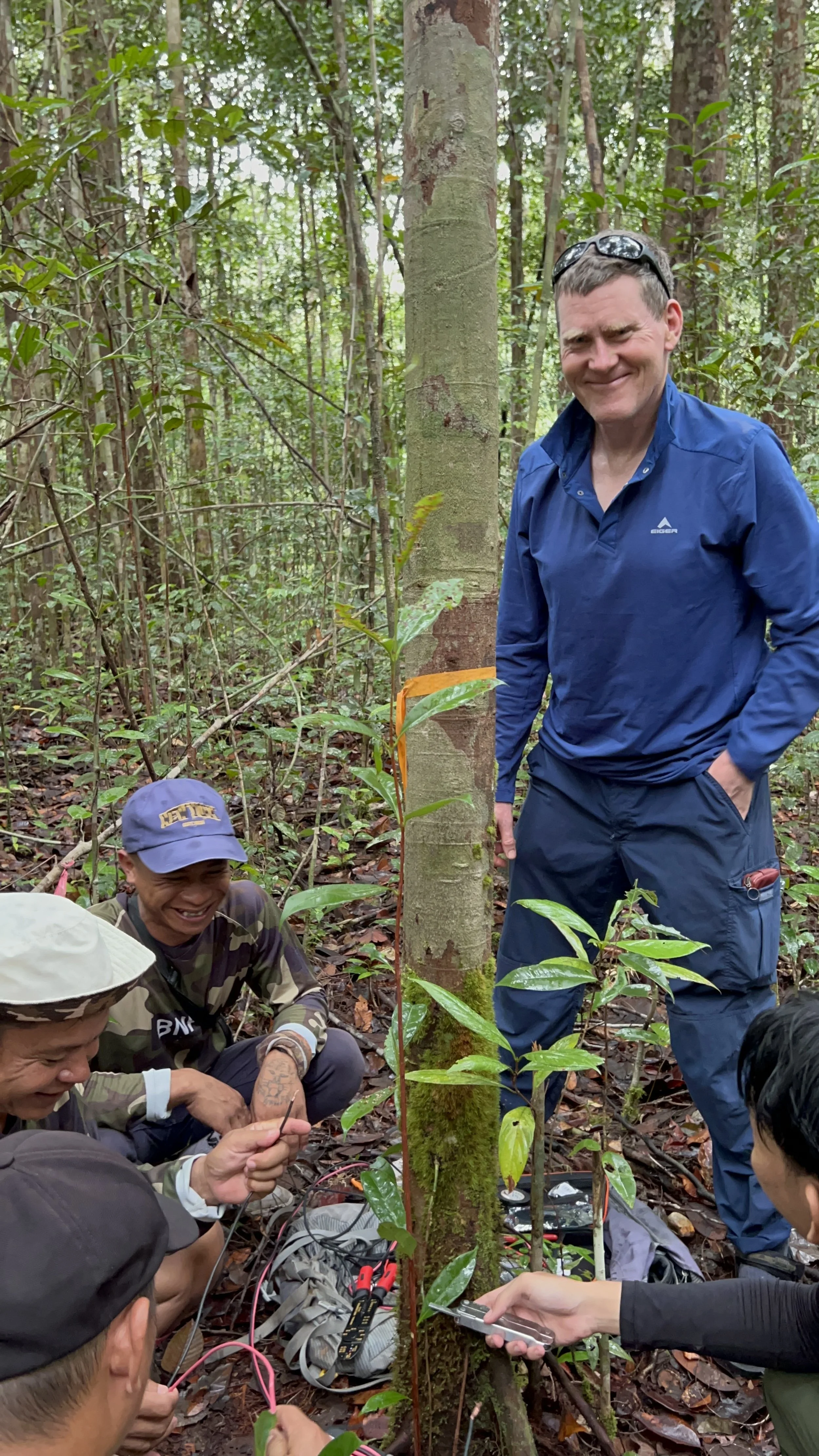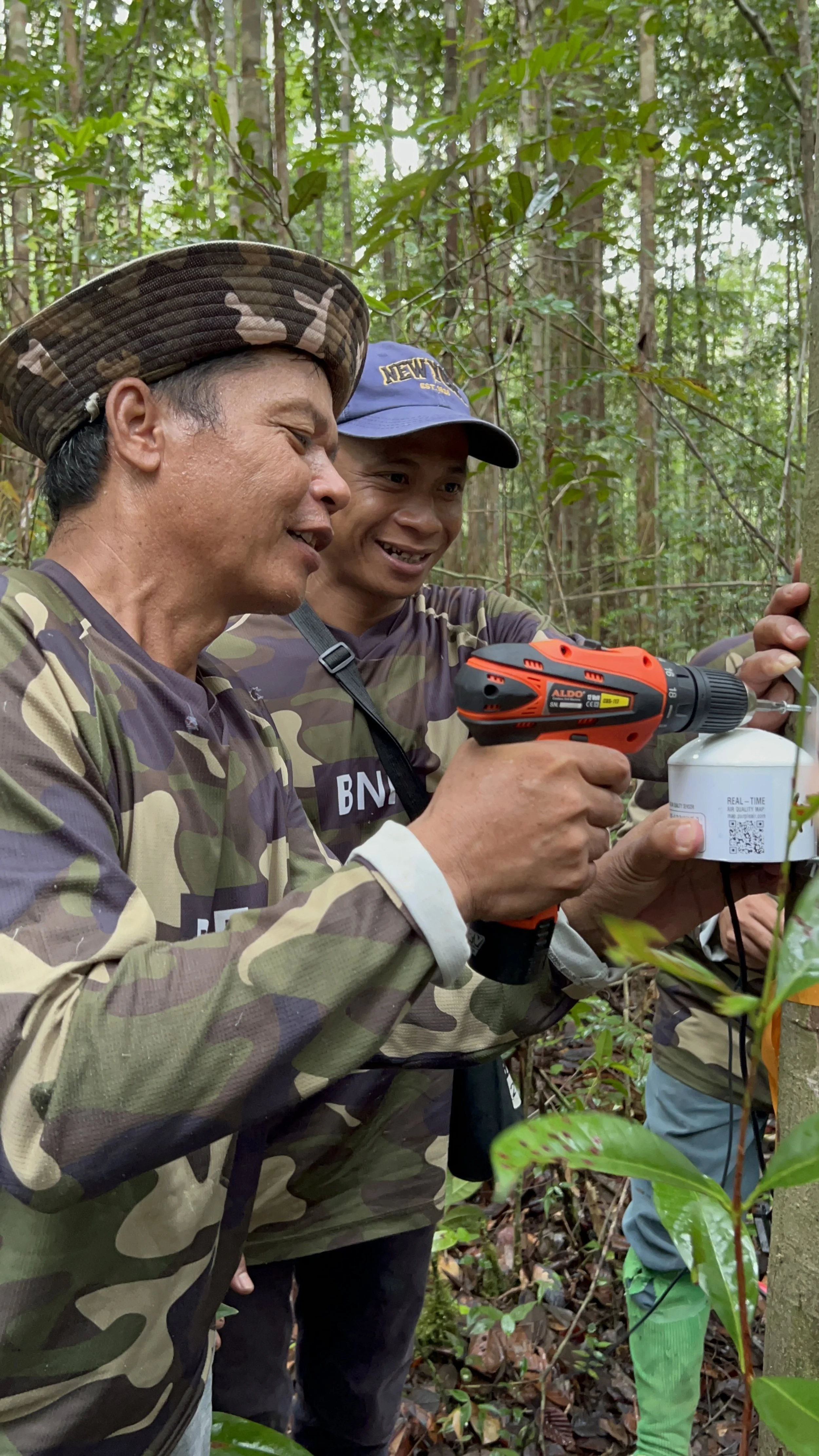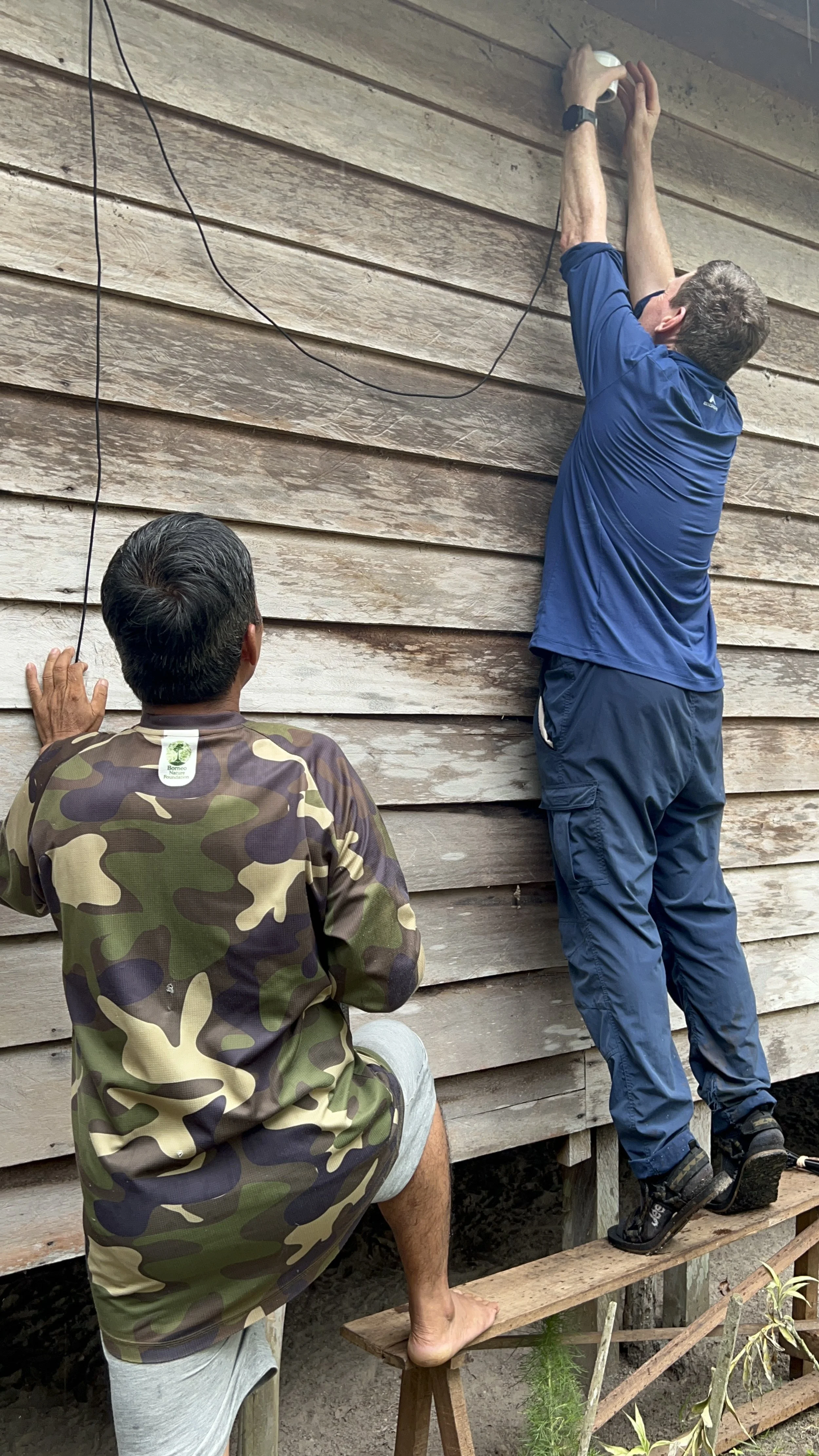“My research explores how the sounds of Borneo’s forested landscapes are affected by changes in air quality. With support from AIFIS, my collaborative team and I have co-deployed autonomous units that simultaneously record soundscapes (Swift recorders) and monitor particulate matter (Purple Air sensors) across forest and village sites in Central and East Kalimantan. The data we are collecting will allow us to understand how air pollution from wildfire smoke, urban development, and other sources alters the behavior and communication of wildlife. Our diverse collaborative team includes undergraduate students in Ithaca and Kalimantan, local community members, and scientists from the U.S., England, and Indonesia with experience and expertise in forestry, biology, atmospheric chemistry, bioacoustics, and more.” - Dr. Wendy M. Erb, Cornell University (2023 AIFIS-CAORC Fellow)
Interactions with Indonesian counterparts
This research project involves fieldwork by a dedicated team of local community members, NGO staff, and students who deploy and service sensors in remote areas. To prepare for fieldwork, my collaborators at the University of Leeds trained our local team how to program, deploy, and service air quality monitors and shared preliminary findings about air quality patterns across Central Kalimantan. In parallel, I have trained several undergraduate mentees at Cornell, Universitas Palangkaraya, Universitas Muhammadiyah Palangkaraya, and Universitas Mulawarman to manually scan and curate annotations of target species from soundscape recordings. Each student project focuses on a different acoustically distinct species for their dissertation – from giant woodpeckers and squirrels, singing gibbons, and barking geckos – collectively generating a comprehensive sound library representing diverse taxonomic groups, activity patterns, and ecological roles. At the K. Lisa Yang Center for Conservation Bioacoustics, we can use these annotated sounds to train and test deep learning models that will help us automatically detect and classify the sounds of target species.
Lessons learned
This project has taught me about the value of interdisciplinary research – both in terms of the knowledge it generates as well as the relationships and networks it supports and grows. Bringing together scientists, students, and community members from two Indonesian provinces, and two universities in the U.S. and the U.K. this project draws on and celebrates diverse knowledges, backgrounds, and experiences. Both air quality and soundscapes hold unique interest, relevance, and value to local communities, and the knowledge we are producing from this work has great potential to engage and empower local people to monitor and protect the environments where they live and work. Lastly, the opportunity to train and learn with so many bright and curious students – both in Indonesia and the U.S. – has brought fresh ideas, questions, and inspiration to this work. Having the chance to work with such talented, dedicated, passionate, and kind folks from around the world is certainly one of the greatest perks of my job!









